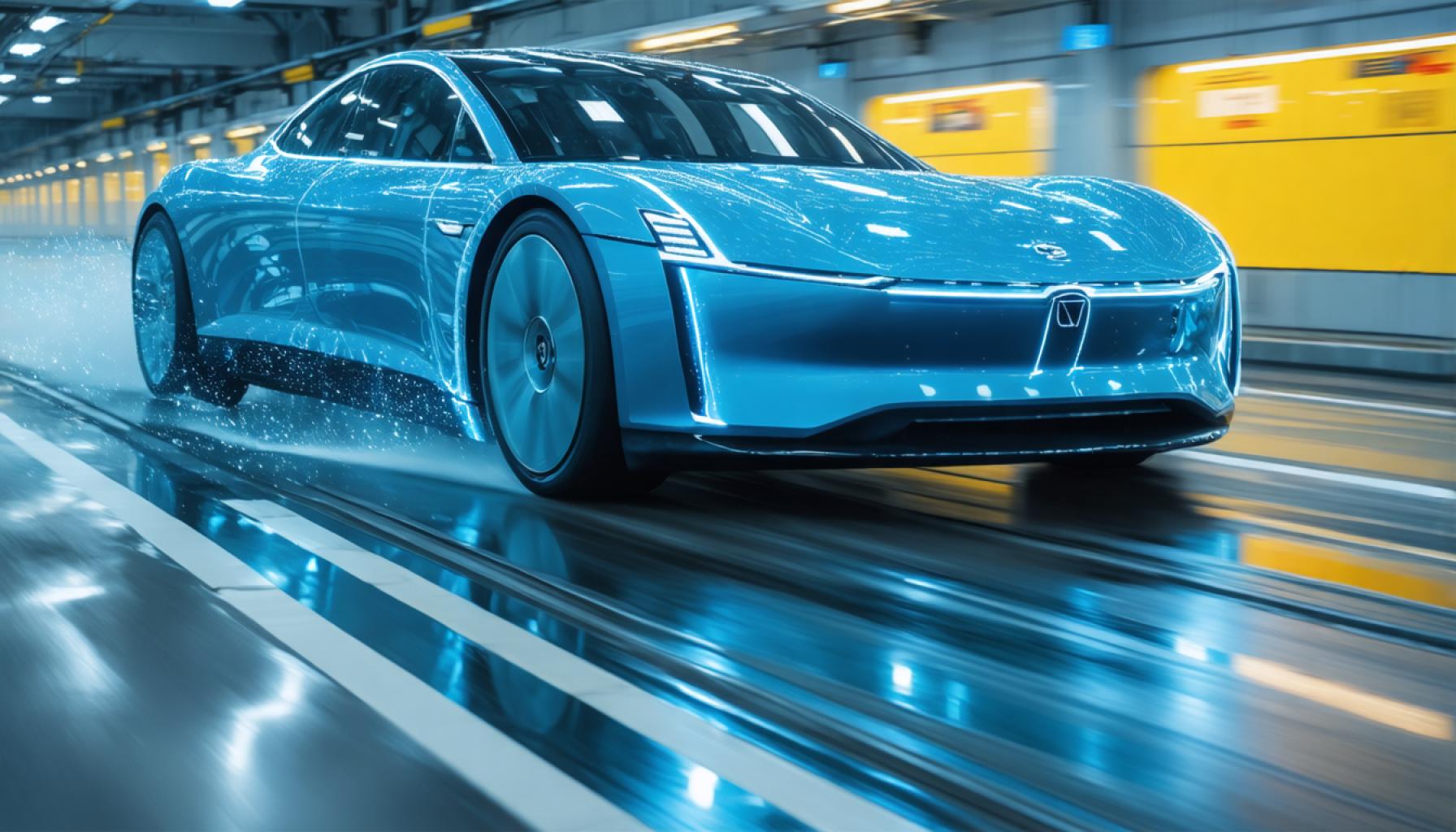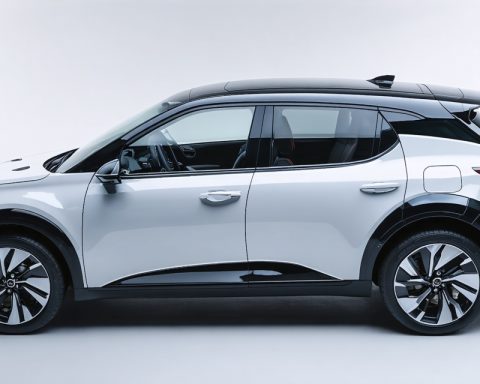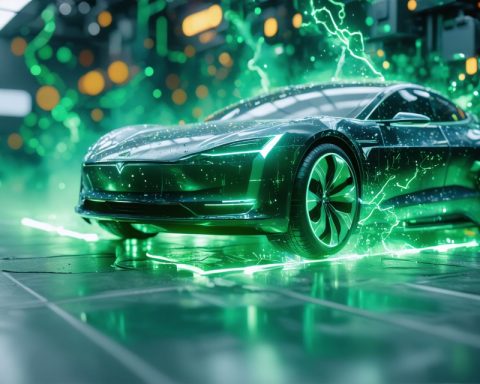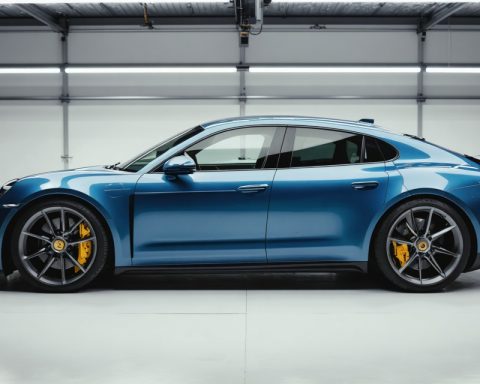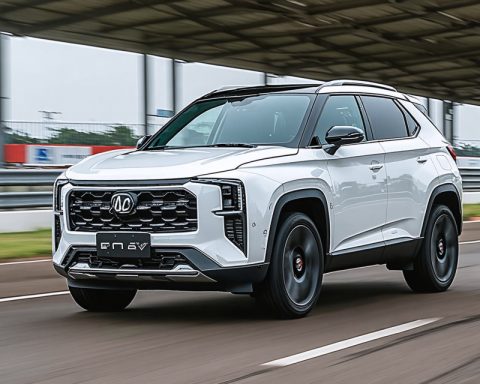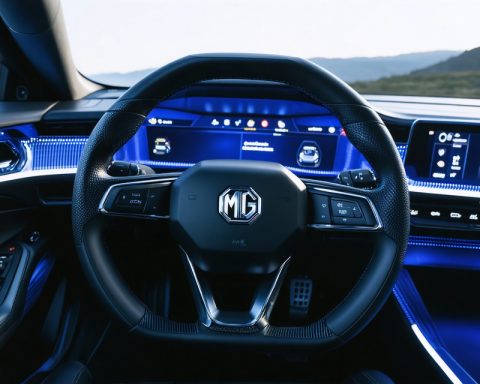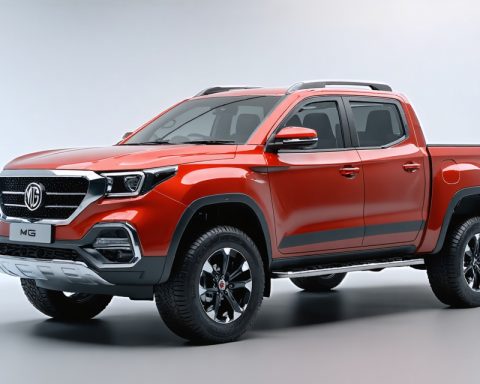- Electric vehicles exemplify innovation and sustainability, with key technologies enhancing their efficiency.
- Regenerative braking allows EVs to reclaim energy, converting kinetic energy into stored power, thus extending range and conserving battery life.
- This technology is especially beneficial in hilly or mountainous regions, where it can convert downhill motion into battery charge.
- Regenerative braking reduces EV dependence on charging stations, lowering electricity use and decreasing carbon footprints.
- Cities are adapting to support EVs with infrastructure, recognizing regenerative braking’s role in sustainable urban planning.
- This advancement signals a shift towards a future-centered approach to energy-efficient and environmentally responsible transportation.
- Regenerative braking embodies a movement towards minimizing energy waste and driving sustainable mobility forward.
Electric vehicles (EVs) are more than just a nod to sustainability; they embody innovation, transforming our daily commute into a journey toward a brighter future. As the quiet hum of an electric car zips by, it’s easy to forget the technological marvel beneath its sleek exterior. Among these innovations, regenerative braking stands out, reshaping how we think about energy and efficiency.
Imagine a world where every stoplight, every shift from speeding to a halt, contributes to your energy reservoir rather than draining it. That’s the magic of regenerative braking. This technology allows EVs to reclaim energy typically lost as heat in conventional braking systems. How does it work? When you press the brake, the electric motor reverses. Instead of consuming electricity, it generates it, transforming kinetic energy back into stored power. This effective recycling significantly extends the vehicle’s range and conserves battery life.
Consider descending a steep hill in an EV. Traditional vehicles would require gear-down techniques, but in an electric vehicle equipped with regenerative braking, each downward mile translates to electricity fed back into your battery. This makes long drives more efficient and regionally boosts EV appeal in hilly or mountainous areas.
While many drivers relish the seamless, single-pedal driving experience, enthusiasts enjoy the added control—it feels like they’re handling a sophisticated piece of machinery designed for both power and precision.
The Environmental Edge
Energy efficiency from regenerative braking isn’t just a bonus for drivers; it’s a leap forward for the environment. By reclaiming energy, EVs can potentially lessen their reliance on charging stations, leading to lower overall electricity consumption. Reduced dependency on the grid means decreased fossil fuel usage, further shrinking the carbon footprint unique to EVs.
The Future Beckons
Regenerative braking is an integral part of the ever-evolving green transport tapestry, paving the way for advances in both technology and environmental stewardship. As cities evolve to accommodate electric cars with dedicated lanes, green zones, and charging infrastructure, understanding the hidden strengths of regenerative braking becomes crucial for urban planners.
So, the next time you see an electric car gliding silently on the road, remember there is a brilliance at work under the hood—the kind of brilliance that stops wasteful energy loss in its tracks and embraces a smarter, more sustainable approach to mobility.
For drivers and the environment alike, regenerative braking is not merely a mechanism but a movement—driving us all towards a future that does not come to a halt but keeps efficiently moving forward.
The takeaway? Next-gen technology is here, and it’s making every ride count—not just for you, but for the planet too.
Unlock the Full Potential of Regenerative Braking: The Future of Electric Vehicles
Expanding Your Knowledge of Regenerative Braking and Electric Vehicles
Electric vehicles (EVs) have revolutionized the automotive landscape, inherently linking sustainability with modern transportation. One of the most compelling features of EVs is regenerative braking, a technology that has a profound impact on energy efficiency and environmental sustainability. Building on the basics, let’s delve deeper into aspects of this innovation that were not fully explored.
How-To Steps & Life Hacks for Maximizing Regenerative Braking
1. Adaptive Driving: Engage in anticipatory driving. By observing traffic flow, you can smoothly decelerate before red lights and turns, maximizing the regeneration process.
2. Vehicle Settings: Many EVs offer adjustable regenerative braking settings. Familiarize yourself with these settings to optimize performance based on road conditions.
3. Education and Practice: Participate in workshops or training sessions offered by your vehicle manufacturer to learn about optimal driving techniques that enhance regenerative braking effectiveness.
Real-World Use Cases and Benefits
Beyond enhancing vehicle range, regenerative braking has diverse applications:
– Public Transport: Electric buses equipped with regenerative braking systems are gaining traction. Cities like Bogotá and Los Angeles have integrated such buses into their public transit systems, reducing emissions and improving energy efficiency.
– Freight and Delivery: Companies employing electric trucks benefit from reduced operational costs as regenerative braking lessens wear and tear on braking systems, leading to decreased maintenance costs.
Market Forecasts & Industry Trends
The market for regenerative braking systems is anticipated to grow significantly, driven by increasing adoption of EVs and hybrids worldwide. Statistics from the International Energy Agency indicate that EV sales are expected to continue robust growth, which will, in turn, bolster demand for advanced braking systems.
Regenerative Braking Reviews & Comparisons
While most EVs incorporate regenerative braking, the efficiency varies:
– Tesla Models: Renowned for sophisticated systems that allow drivers to customize regenerative braking intensity.
– Nissan Leaf: Offers an e-Pedal mode, providing a strong regenerative effect.
– Chevrolet Bolt: Features a regenerative paddle for additional energy recovery during deceleration.
Comparatively, Tesla often receives high praise for its nuanced and customizable approach to regenerative braking.
Controversies & Limitations
Despite its advantages, regenerative braking is not without challenges:
– Limited Energy Recovery: Generally, only 10-30% of the vehicle’s energy can be recovered, leading to mixed opinions on its overall efficiency.
– Battery Strain: Frequent regenerative braking can affect battery health over time, requiring careful management to balance efficiency with longevity.
Insights & Predictions for the Future
Looking ahead, advancements in energy storage technology, such as solid-state batteries, could make regenerative braking even more effective. Furthermore, integrating AI and machine learning to optimize energy recovery based on driving patterns is a potential development on the horizon.
Pros & Cons Overview
Pros:
– Enhanced energy efficiency
– Lower environmental impact
– Reduced brake wear
Cons:
– Some energy loss remains
– Potential battery stress
Actionable Recommendations for EV Drivers
1. Explore Vehicle Features: Thoroughly familiarize yourself with your EV’s regenerative braking features and adjust settings to suit your driving style.
2. Stay Updated: As technology evolves, keep an eye out for software updates that enhance braking system performance.
3. Plan Routes: Consider routes with minimal stop-and-go traffic for optimal energy recovery.
For further insights on electric vehicles and their innovative technologies, explore the official Tesla website.
Through smart driving and understanding the full potential of regenerative braking, EV owners can not only boost their vehicle’s efficiency but also contribute to a more sustainable future.
